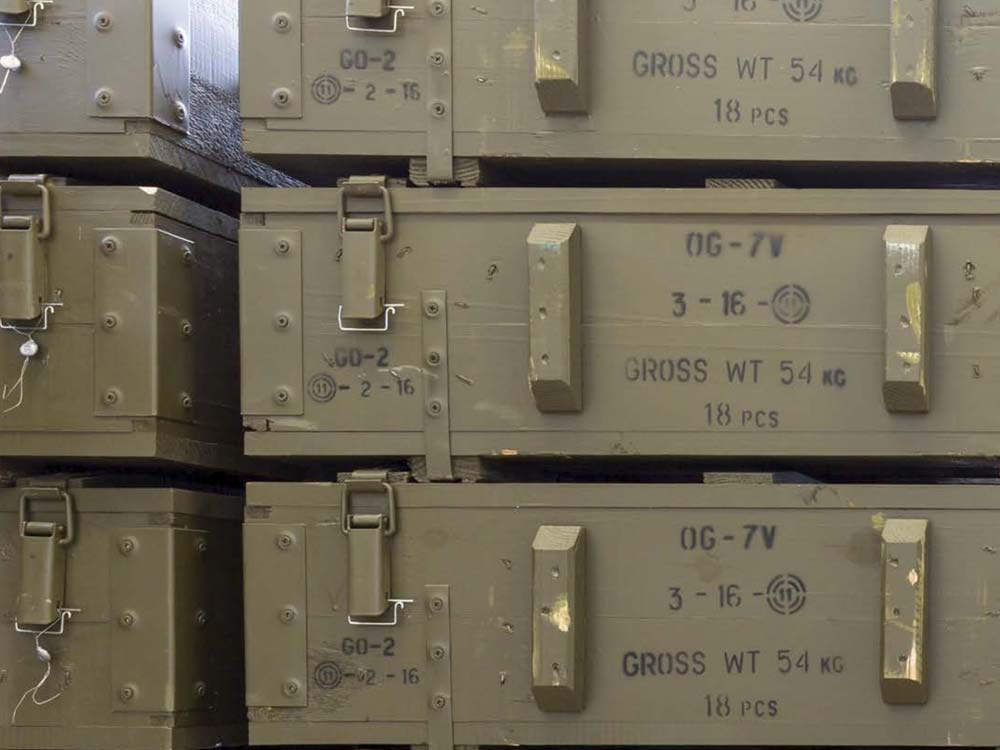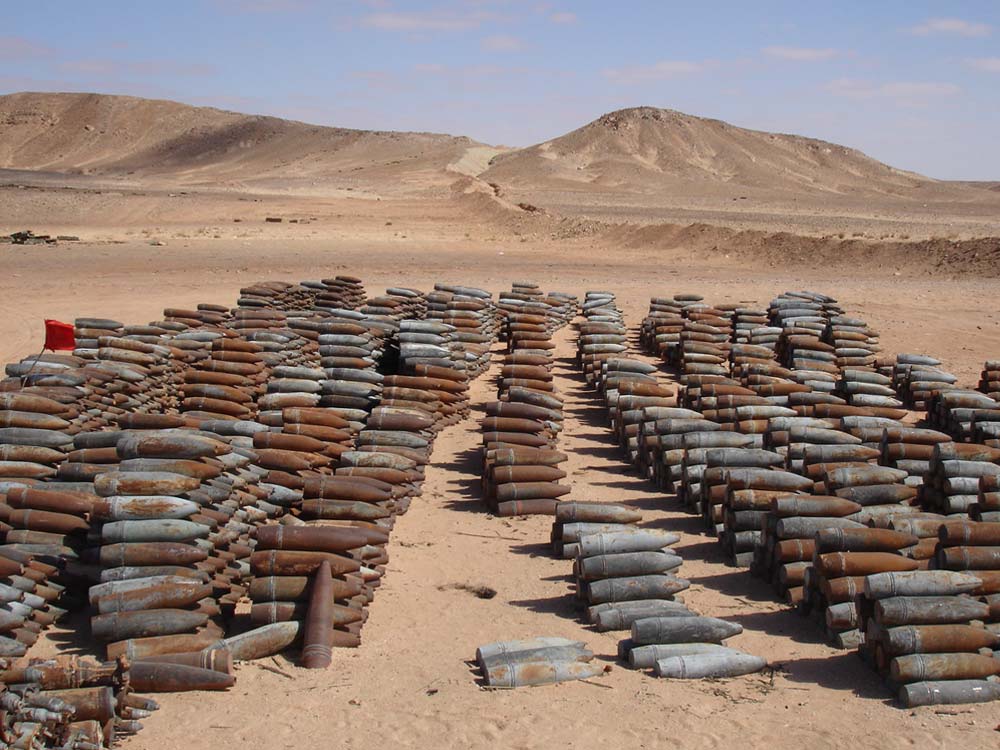EOD QM, PSSM & ERW and Landmine Risk Management
EXPLOSIVE ORDNANCE DISPOSAL
IMAS ERW & Landmine Risk Assessment Syllabus
-
ERW Risk Management Officer
The ERW and Landmine Risk Management Officer in Mine Action course, aligned with IMAS, aims to provide participants with the essential skills and knowledge to reduce the risks associated with ERW and landmines.
The focus is on effective planning, community engagement, quality assurance, and continuous learning, ensuring safer environments for affected communities.
To provide participants with the necessary knowledge and skills to effectively manage and oversee ERW and landmine risk reduction operations according to the International Mine Action Standards (IMAS). -
Target Audience
This course is aimed at individuals who are involved in or wish to be involved in the management and oversight of ERW and landmine risk reduction operations.
This includes military and civilian personnel, non-governmental organization (NGO) staff, and government officials as well as the oil and gas industry, construction, land exploration and mining, land reclamation and land survey, coastal operations and security.
-
Course Duration
2 weeks
IMAS ERW & Landmine Risk Management
Curriculum Overview
- Introduction to Mine Action and IMAS
- Definition and principles of Mine Action.
- Overview of the International and National Mine Action Standards (IMAS) and its importance.
- Types and Characteristics of ERW and Landmines
- Types of mines and all kinds of ERW.
- Mechanisms and effects.
- Recognition of sub-munitions.
- Risk Management Concepts in Mine Action
- Principles of risk management.
- Assessing and analyzing risks.
- Risk treatment strategies.
- Monitoring and reviewing risks.
- ERW Risk Mitigation and Implementation.
- Lead-in into IEDs
- IED types, components and functioning.
- Response and course of actions to a suspected IED.
- Vulnerable Points.
- Operational Planning
- Survey and assessment methodologies.
- Setting operational priorities.
- Tasking and coordination of resources.
- ERW Task Management and Planning.
- ERW Clearance Process.
- Community Liaison and Risk Education
- Importance of community involvement.
- Risk education strategies and methodologies.
- Monitoring and evaluation of risk education programs.
- Quality Management
- IMAS related to Quality Management.
- Quality Assurance (QA) and Quality Control (QC) processes.
- Monitoring, evaluation, and reporting.
- ERW and Management of HSE.
- Accident and Incident Reporting
- IMAS protocols for accident reporting.
- Investigation and analysis of accidents.
- Learning and improvement.
- Advance planning with emergency services.
- Medical Support and Victim Assistance
- IMAS for medical support.
- Immediate and long-term medical care.
- Psychological support and rehabilitation.
- Equipment and Technology in Mine Action
- Detection and neutralization equipment.
- Personal protective equipment (PPE).
- New technological advancements.
- Use of Information, Mapping and Database Management Systems
- Introduction the reporting system
- Use and understanding of the systems capabilities to interpret patterns in MA
- Understanding of Mapping and Reports Risk and Threat Assessment.
- Database use for appropriate threat mitigation and disposal information (Experts only).
PSSM Syllabus
- Physical Security and Stockpile Management
-
PSSM Officer
The provided training is designed to equip participants with the knowledge and skills needed to safely execute operations that comply with the International Ammunition Technical Guidelines (IATGs) and International Mine Action Standards (IMAS) set forth by the United Nations (UN).
Additionally, the training adheres to the regulations of the respective National Mine Action Authority (NMAA).
The training ensures a level of competency that not only meets the IATGs but also encompasses the management of the Physical Security and Stockpile Management (PSSM) of Small Arms and Light Weapons (SALW), in line with the pertinent publications of the International Small Arms Control Standards (ISACS). -
Target Audience
This course is for those who are at minimum qualified to IMAS EOD Level 2 or higher and seek to advance in the field of Mine Action and Ammunition and Weapons Management and Destruction. This includes military and civilian personnel, non-governmental organization (NGO) staff, and government officials, coastal operations and security.
-
Course Duration
2 weeks
PSSM – Physical Security and Stockpile Management
Curriculum Overview
- Introduction to PSSM
- Unintentional Explosions in ASAs or Munition Sites
- Introduction into Land Service Ammunition
- General Rules and Regulations
- Hazard Classification
- Compatibility Groups
- Lotting and Batching of Ammunition
- Ammunition and Package Marking
- Inside and Outside Quantity Distance
- Storehouses/Magazine Types and Construction
- Calculating Storage Capacity and Scale
- Ammunition Accounting
- Ammunition Storage Calculation
- Movement of Ammunition
- Ammunition Inspection and Surveillance
- Temporary Storage and Field Management
- Ammunition Storage Area Visit
- Security in ASAs
- Fire Fighting and Prevention
- Electrical and Supply Installations in ASAs
- Clearance of Exploded Ammunition
- Ammunition accidents, performance failures and operation constraints
- Demilitarization and Destruction of Ammunition
- Weapons and Ammunition Security and Control
IMAS Quality Management Syllabus
-
Quality Management Officer
Quality management in Mine Action ensures that operations are conducted efficiently, effectively, and safely. By aligning with IMAS, organizations can achieve international recognition and trust, which can lead to increased support and funding for their operations. This course will provide Quality Management Officers with the foundation they need to uphold these standards and contribute significantly to the success and safety of Mine Action initiatives. Target Audience
- Existing or aspiring Quality Management Officers in the field of Mine Action.
- Mine Action senior management and operations staff.
- EOD Lv. 3 qualified staff thriving/considered for senior management or QM Officers assignment.
- Stakeholders involved in monitoring and evaluation.
Course Duration
2 weeks
IMAS Quality Management in Mine Action
Curriculum Overview
- Introduction to Mine Action and IMAS
- Definition and principles of Mine Action.
- Evolution and overview of IMAS.
- Quality Management Concepts in Mine Action
- Principles of quality management.
- Difference between Quality Assurance (QA) and Quality Control (QC).
- QA/QC methodologies and tools.
- Role of a Quality Management Officer
- Responsibilities and duties.
- Interaction with other Mine Action roles and stakeholders.
- Planning and Conducting Quality Assurance Activities
- Risk assessments.
- Development of operational procedures.
- Training and accreditation.
- Monitoring and evaluation.
- Reporting non-conformities.
- Quality Control Techniques in Mine Action
- Inspections and checks.
- Testing equipment and procedures.
- Evaluating performance and efficiency.
- Continuous Improvement in Mine Action Operations
- Principles of continuous improvement.
- Tools for identifying areas of improvement.
- Root cause analysis.
- Documentation and Reporting
- Importance of record-keeping in Mine Action.
- Types of reports and their purposes.
- Using data for decision-making.
- Stakeholder Engagement and Communication
- Identifying and managing stakeholders.
- Effective communication techniques.
- Ethical and Safety Considerations
- IMAS safety standards.
- Ethics in Mine Action.
- Case Studies and Simulations
- Real-life scenarios and decision-making exercises.




